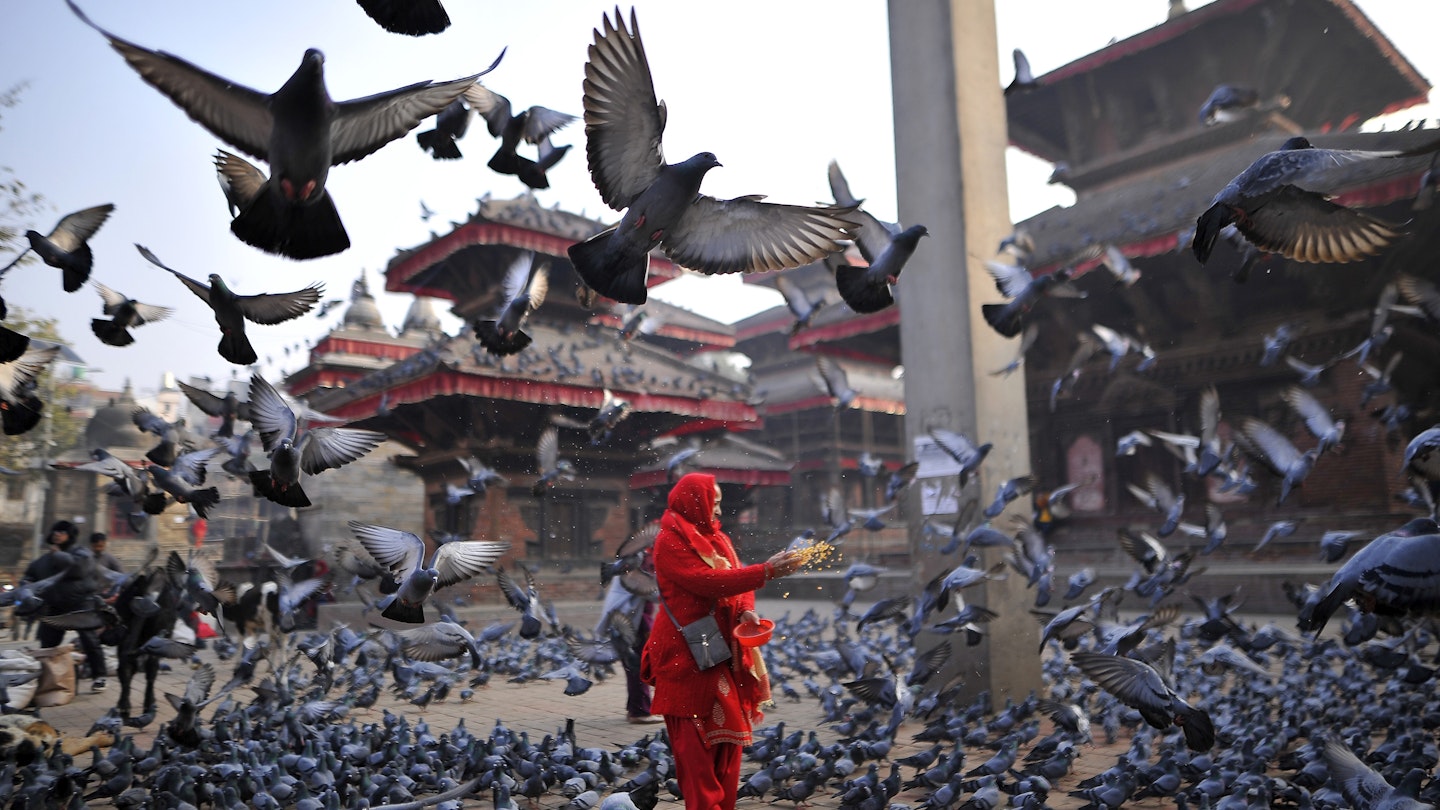The Ultimate Guide to the Best Times to Visit Nepal
While Nepal may be most famous for its high-altitude mountains, it actually spans from the lowland Terai – the jungle-filled plains bordering India – to the edge of the high-altitude Tibetan Plateau. Consequently, there’s a lot of climatic variety.
The best month to visit Nepal largely depends on your specific interests and whether you’ll be venturing into either high or low-lying areas. Weather plays a significant role in determining tourism seasons and activities.
Whether you want to spot rhinos, go white-water rafting, or hike the magnificent mountains, our insider guide to Nepal’s seasonal variations and festivities will help you choose the best possible time for your journey.

Late September to November: Ideal for Trekking, Sightseeing, and Festivities
October to November marks the peak season for travel to Nepal, making it the best time to visit for most activities. Although late September is the shoulder season, monsoon rains may still linger. The weather is typically warm yet pleasant, and the generally clear skies offer breathtaking mountain views. Rafting or kayaking on Nepali rivers is also enjoyable during this time, providing decent water volume and pleasant temperatures. Although this period is not the cheapest for travel, Nepal remains generally affordable.
Potential tourists may be concerned about traveling during the peak season due to crowds; however, it heavily depends on where you go. Popular trekking trails, such as Everest Base Camp, will not offer solitude. Therefore, it is advisable to book guides, flights, and accommodations well in advance, possibly a few months early.
The peak tourist season coincides with numerous cultural festivals. Dashain, which usually occurs in October, and Tihar, typically in November, are two significant celebrations. While Dashain is mainly a family event and many businesses in Kathmandu may close for about a week, Tihar, also known as the festival of lights, provides more opportunities for travelers to engage with local culture. Celebrating these festivals is considered one of the best times to explore Kathmandu or Pokhara.

Winter: Best for Off-Season Low-Altitude Trekking
Many areas of Nepal are situated at lower altitudes than many imagine, making the short winter (December to early February) generally mild. While foggy mornings and chilly nights may occur, clear winter days can be quite warm, especially in the cities.
Moreover, winter is one of the most economical times to visit Nepal, with fewer tourists around. Lower-altitude trekking trails – remaining below approximately 2500m (8200ft) – will be comfortable as long as you have a warm jacket for colder nights. Experienced winter hikers might venture higher but should be adequately prepared for snow conditions.
Late Winter: Best for Wildlife Spotting
Nepal is not solely about its mountains. The national parks in the Terai, such as Chitwan and Bardia, are home to diverse wildlife, including the one-horned rhinoceros and a few Royal Bengal tigers. The end of winter (January and February) offers the best opportunities for wildlife spotting as local villagers are allowed to harvest the elephant grass, previously concealing many animals. Spotting rhinos and other wildlife becomes significantly easier during this period. However, waiting too long can result in excessive heat in the Terai regions.

Spring: A Secondary Peak Season with Cautions
Spring (late February to April) has historically been seen as a second peak season in Nepal. However, recent trends indicate that this may not hold true, as winters have turned drier. Consequently, as spring temperatures rise, the incidence of wildfires has increased.
The smoke produced by these wildfires can severely impact air quality throughout the country, making visibility poor, especially in Kathmandu. Nevertheless, spring also features numerous exciting festivals such as Shivaratri in February, Holi in March, and Patan’s Rato Machhendranath festival in April, all of which are accessible to travelers.
Avoid the Pre-Monsoon and Monsoon Seasons
Late spring in Nepal ushers in the countdown to the monsoon, bringing uncomfortable heat and poor air quality. While locals appreciate the cooling rains that commence in June, the monsoon season proves to be the least favorable time for tourists. Rain leads to cloudy skies, muddy streets, flight cancellations, and the risk of landslides. Consequently, visitors should avoid this season, with rainfall typically easing by mid-September.

Spring and Fall: Best for Mountain Climbing
This advice may not apply if your goal is to climb Mt. Everest or another Himalayan peak. The climbing seasons do not always align with the optimal trekking and sightseeing seasons. Spring (March to May) and early autumn (late September and October) provide the best weather conditions for mountaineering, although yearly conditions can vary significantly.
Continue Planning Your Trip to Nepal:
Choose your must-visit locations with our guide to the best places to visit.
Get insider tips and tricks for traveling in Nepal on a budget.
Explore Nepal on a road trip and forge your own path!





